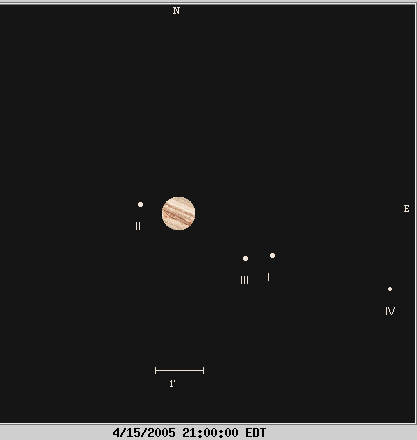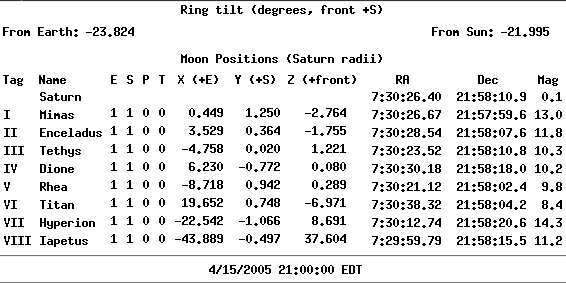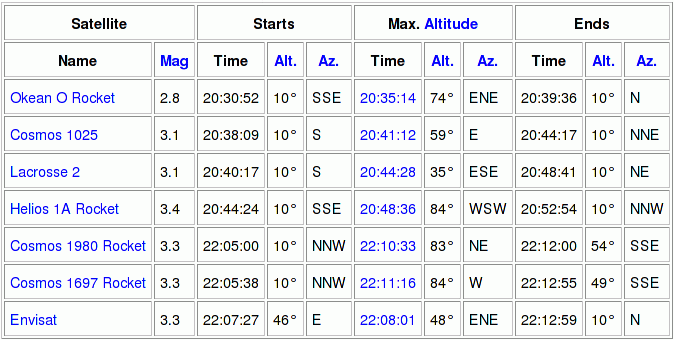

You can find this page on the Internet at
http://spiff.rit.edu/richmond/ritobs/public/apr15_2005/apr15_2005.html
One of our visitors on this night was kind enough to send us the address of his on-line photo album of pictures taken during the event.
Jupiter rises in the east just after sunset during April. It's easy to find -- just face east and look for the brightest, steadiest object in the sky. When you look at Jupiter tonight, you'll have a chance to see its Great Red Spot: it will be moving from the middle of the planet's disk at 8:00 PM to the western edge by 10:00. The figure on the left below shows its appearance at 9:00 PM.
We should be able to see all four of Jupiter's moons, too. They change position from night to night as they revolve around the planet, but tonight, they should be at the positions shown in the figure at right.


Can you see the Great Red Spot? What are the colors of the cloud bands in Jupiter's atmosphere? How many of Jupiter's moons can you find?
The "mag" column in the table below gives the "magnitude" -- a measure of the brightness -- of each moon. The larger the magnitude value, the fainter the moon. Most people can see tenth-magnitude objects with our telescopes, but some can go fainter. Can you?

How many moons can you see around Saturn? Can your eyes reach magnitude 11? If you can see Mimas, at magnitude 13, you have super-vision!


Tonight, the Moon is at First Quarter: that means that roughly half of the side facing the Earth is illuminated by the Sun. It should look something like the figure at left, which is an image taken by Frank Barrett of celestialwonders.com.
Most of the interesting features on the Moon are those near the terminator, the line between the light and dark regions. Near the terminator, the Sun casts long shadows and throws all surface features into strong relief. Some items to check out tonight are:
There are some satellites of Earth for us to view tonight, too. I took the following information from the Heavens Above satellite prediction site.

It will be too late for us to see at the Observatory, but if you are still awake at 10:50 PM tonight, you might catch a very bright "Iridium flare". Every now and then, one of the Iridium satellites (used for a global telephone system) rotates itself into just the right position for sunlight to reflect off its big, shiny antenna down to the ground. This will occur in the Rochester area tonight at 11:50:15 PM: look low in the northeast sky (10 degrees at azimuth 42 degrees) and you should see an object gradually appear, grow to outshine everything else in the area, then fade to darkness, all in about 20 seconds. You can find predictions of these "Iridium flares" on the Heavens Above web site, too.